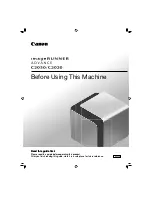
Service Guide
133
Phaser 740 printer
Interpreting Service Print 2
Service Print 2 is useful for evaluating the
condition of the imaging unit. Three prints
are made: a 600 dpi print, a solid red fill
print, and a 1200 dpi print.
With a properly functioning imaging unit and
printer, you should see the following:
1.
Diagonal lines.
These two lines should
be smooth and unbroken.
2.
Crosshairs.
A thin white crosshair
should be visible in each block square.
As the photoconductive belt ages and
fatigues, the crosshair in the top box will
disappear followed in time by the lower
crosshairs. The belt may “rejuvenate”
after a few hours of non-use, but this will
only last for a few prints before fatigue
sets in again.
3.
Fine parallel lines.
Distinct parallel lines,
both horizontal and vertical, should be
viewable. No mottling or blending should
be seen. All vertical lines should be
identical in appearance and thickness to
their horizontal counterparts.
4.
2 pt. text.
The 2 point text, the smallest
printed on the test print, should be easily
readable.
5.
Registration.
Thin horizontal composite
black lines will show misconvergence if
each pass of the accumulator belt does
not properly register with each pass of the
photoconductive belt.
6.
Blended fills.
The fills should be smooth
and even in both the primary and
secondary color fills.
3102-35
1
2
3
4
6
5
Summary of Contents for Phaser 740
Page 6: ......
Page 48: ...36 Phaser 740 and 750 Color Printers ...
Page 102: ...90 Phaser 740 and 750 Color Printers ...
Page 104: ...92 Phaser 740 and 750 Color Printers ...
Page 124: ...112 Phaser 740 and 750 Color Printers ...
Page 129: ...Service Guide 117 Figure 3 Motor and fan FRUs 3102 37 1 10 9 5 8 7 2 6 4 3 ...
Page 131: ...Service Guide 119 Figure 4 Sensor switch and flag FRUs 3102 40 1 7 2 3 4 8 5 6 ...
Page 135: ...Service Guide 123 Figure 6 Imaging and paper feed component FRUs 3102 39 1 2 3 7 9 4 6 8 5 ...




































